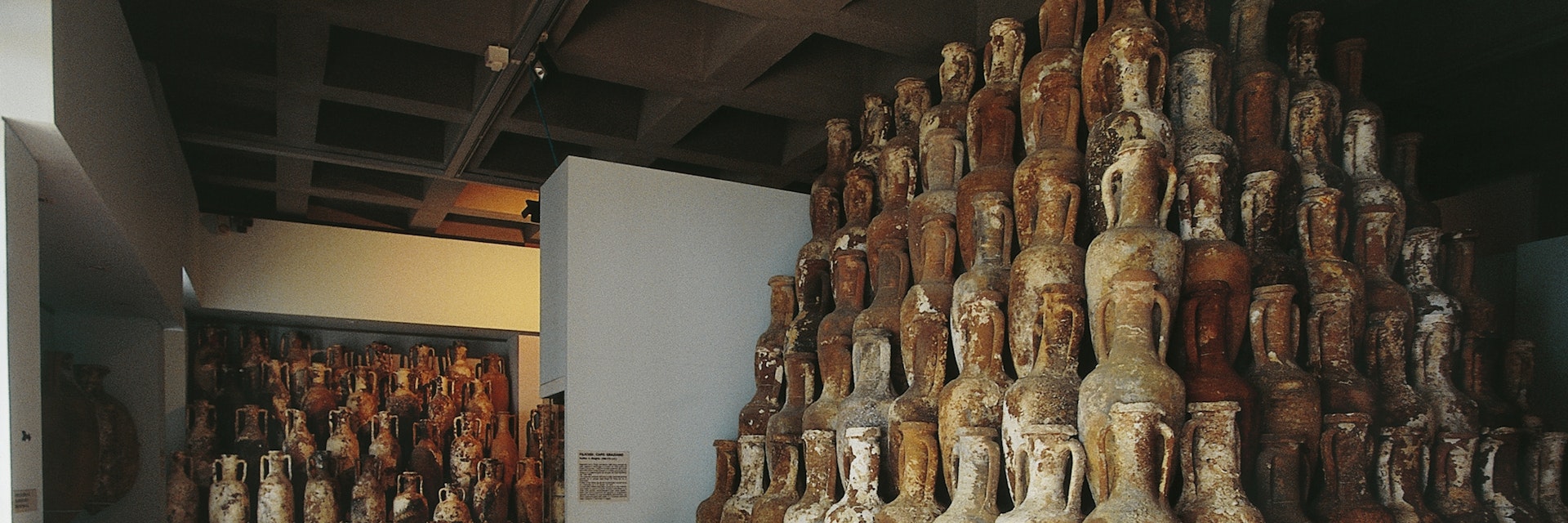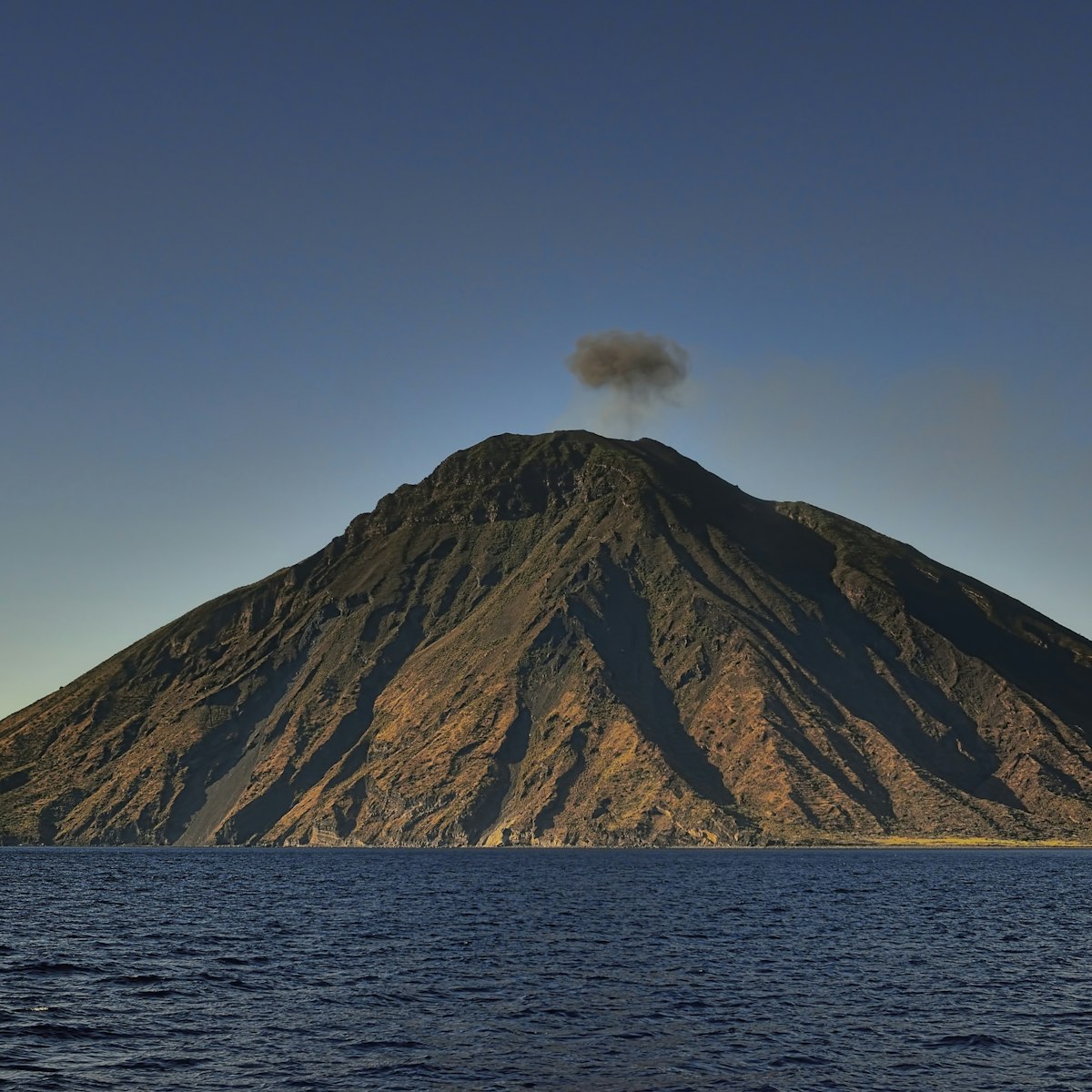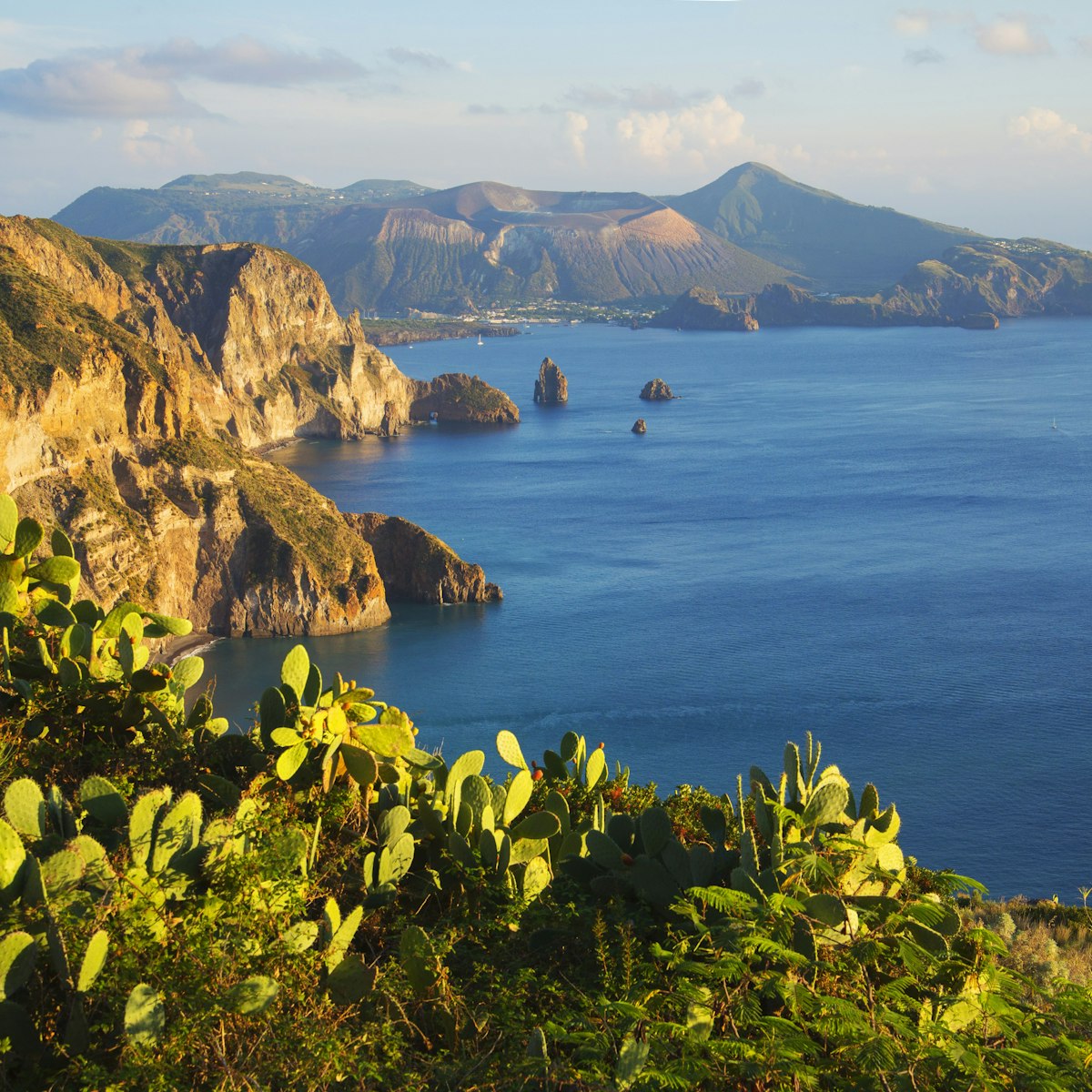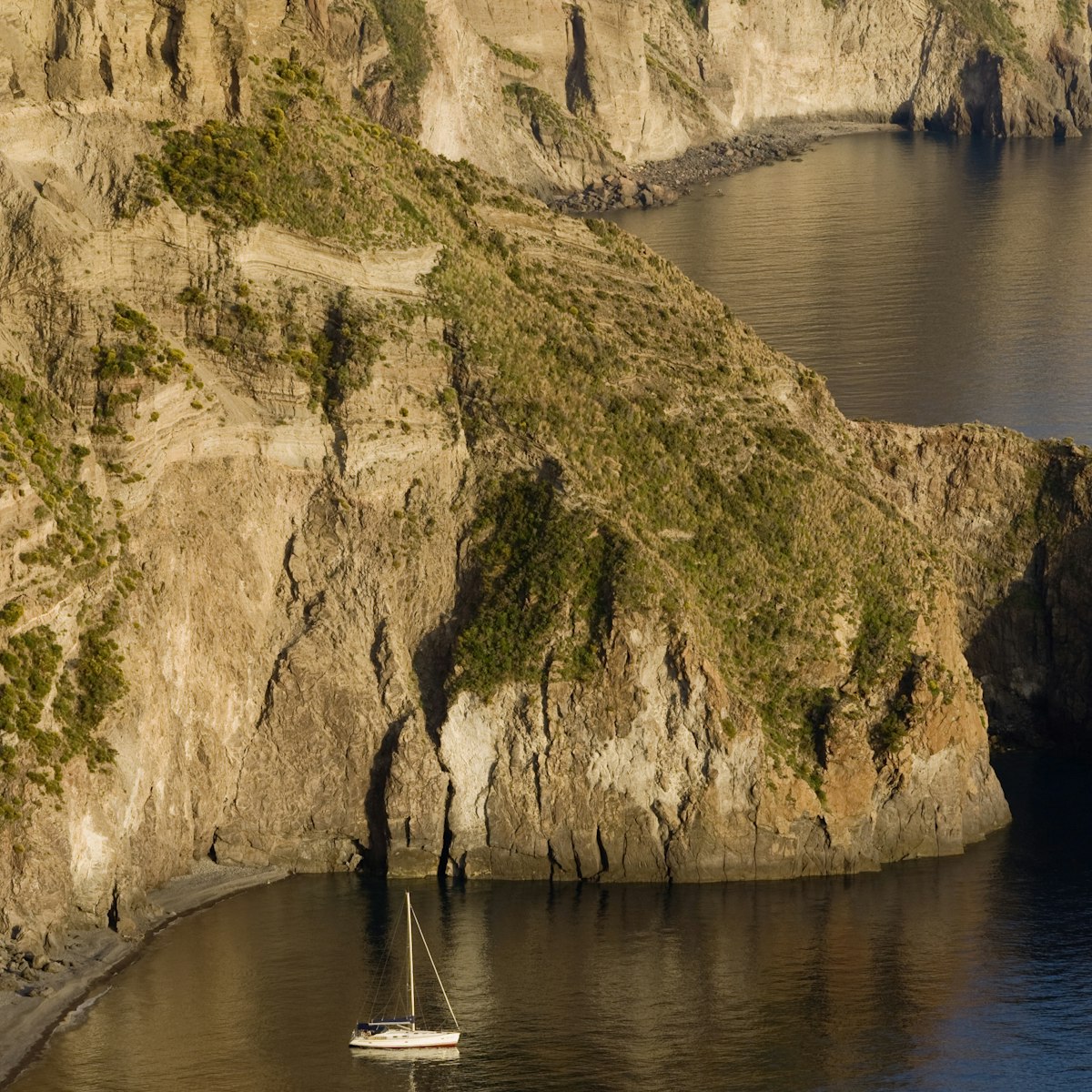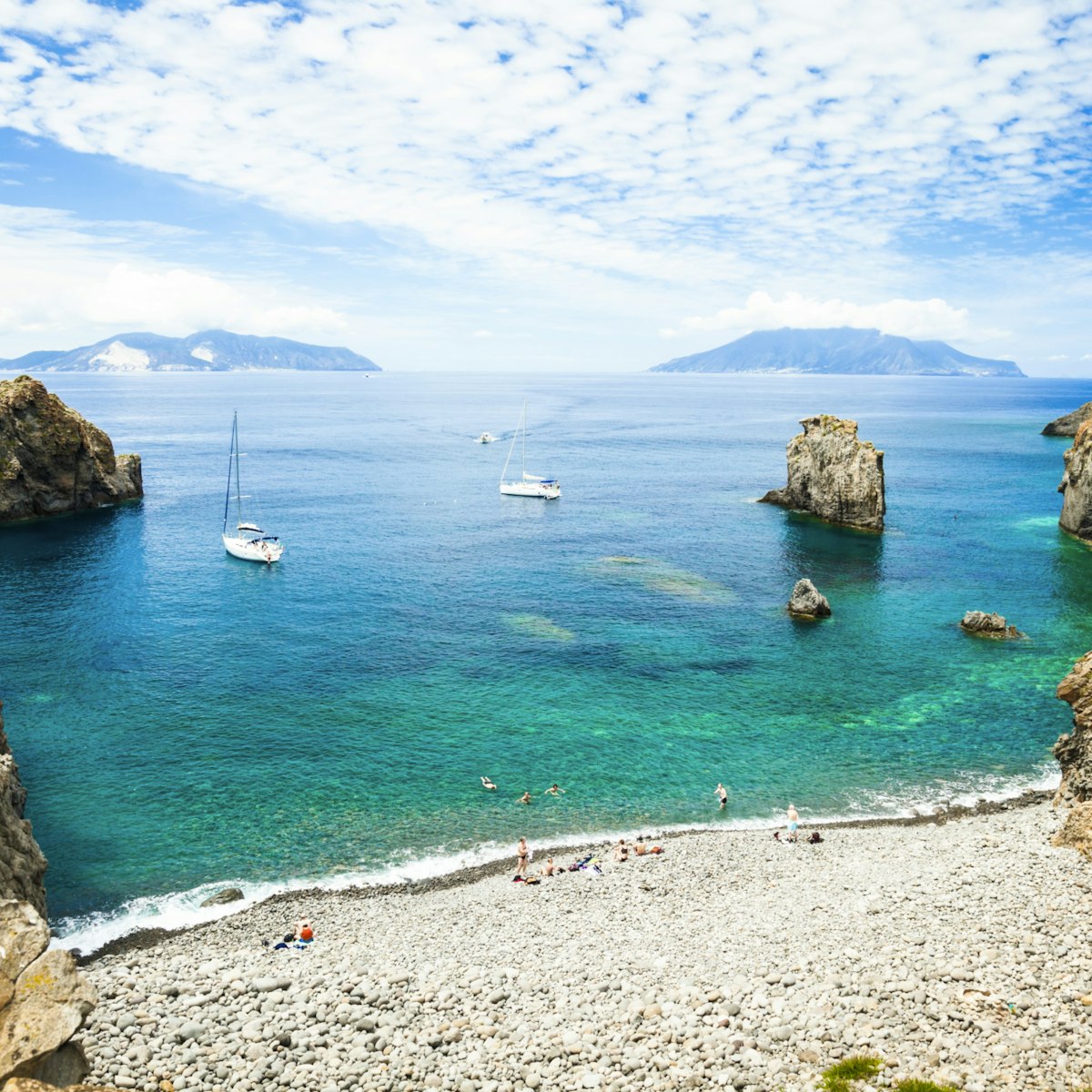A must-see for Mediterranean history buffs, Lipari's archaeological museum has one of Europe's finest collections of ancient finds. Especially worthwhile are the Sezione Preistorica, devoted to locally discovered artefacts from the Neolithic and Bronze Ages to the Graeco-Roman era, and the Sezione Classica, the highlights of which include ancient shipwreck cargoes and the world's largest collection of miniature Greek theatrical masks. Pay admission fees at the ticket office, about 100m north of the Sezione Classica.
The museum is divided into several sections, each housed in a separate building. Start in the Sezione Preistorica in the Palazzo Vescovile (Bishop's Palace) next to the Cattedrale. A plethora of artefacts displayed in chronological order provides a fascinating insight into the development of the island's earliest cultures. Among the first items on display are finely sculpted tools made from the obsidian on which Lipari's early economy was based – telling evidence of the relative sophistication of the island's prehistoric civilisation. Prehistoric finds from the other islands are housed in a small pavilion directly in front of the Palazzo Vescovile.
On the other side of the cathedral is the Sezione Classica. Highlights here include finds from Lipari's 11th-century BC necropolis, including a sizeable collection of burial urns. There's also a staggering array of amphorae salvaged from shipwrecks off the coasts of Panarea, Filicudi and Lipari itself. Upstairs are impressive displays of decorated vases and the museum's treasured collection of Greek theatrical masks. On this same floor you'll find a number of statuettes – the one of Andromeda con bambino (Andromeda with Child) is particularly beautiful – along with some elegant jewellery and a collection of polychromatic vases decorated by an artist simply known as Il Pittore Liparoto (the Lipari Painter; 300–270 BC).
Other sections worth a quick look are the Sezione Epigrafica (Epigraphic Section), across the road from the Sezione Preistorica, which has a small garden littered with engraved stones and a room of Greek and Roman tombs; and the Sezione Vulcanologica (Vulcanology Section), which illustrates the Aeolians' volcanic geology.
